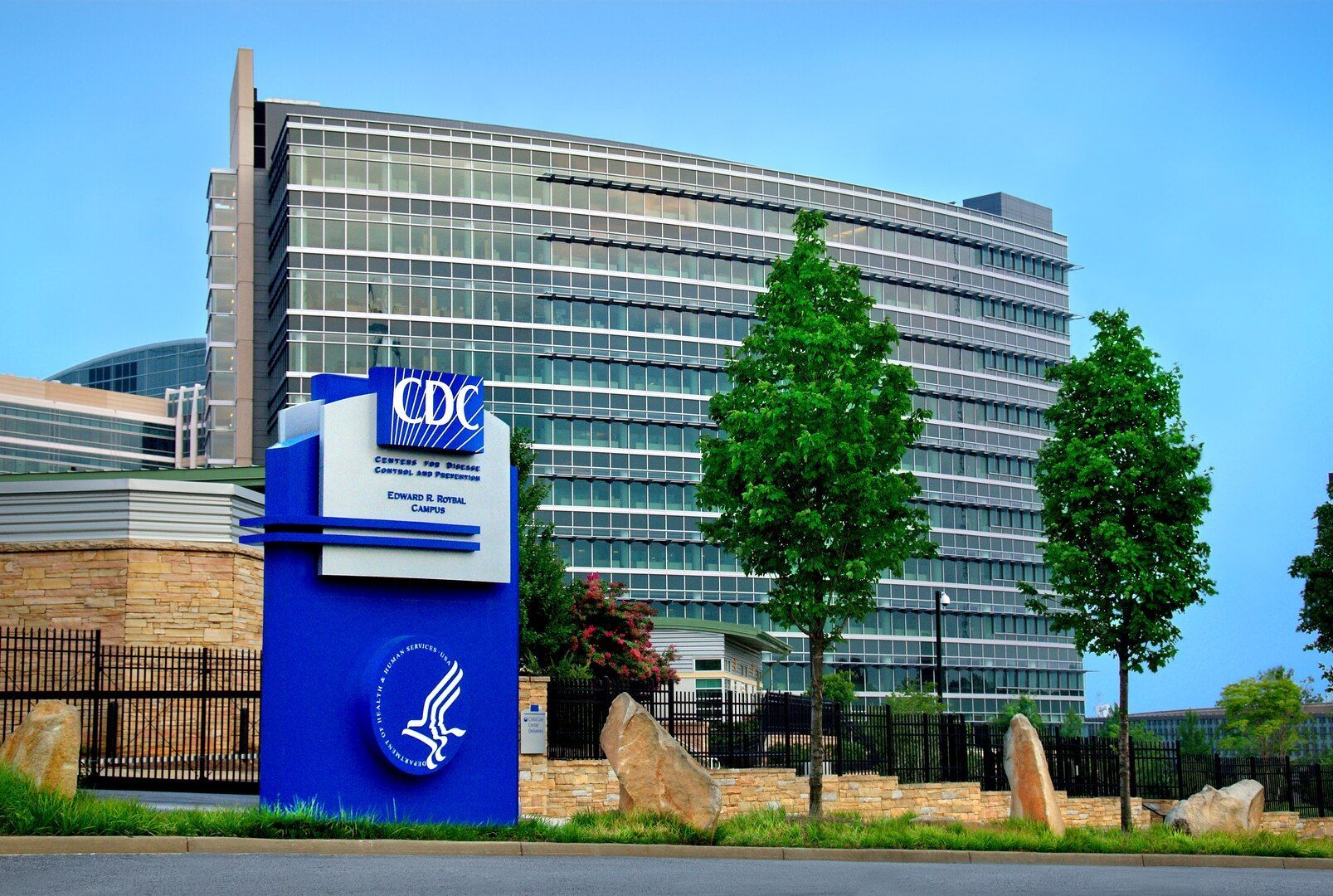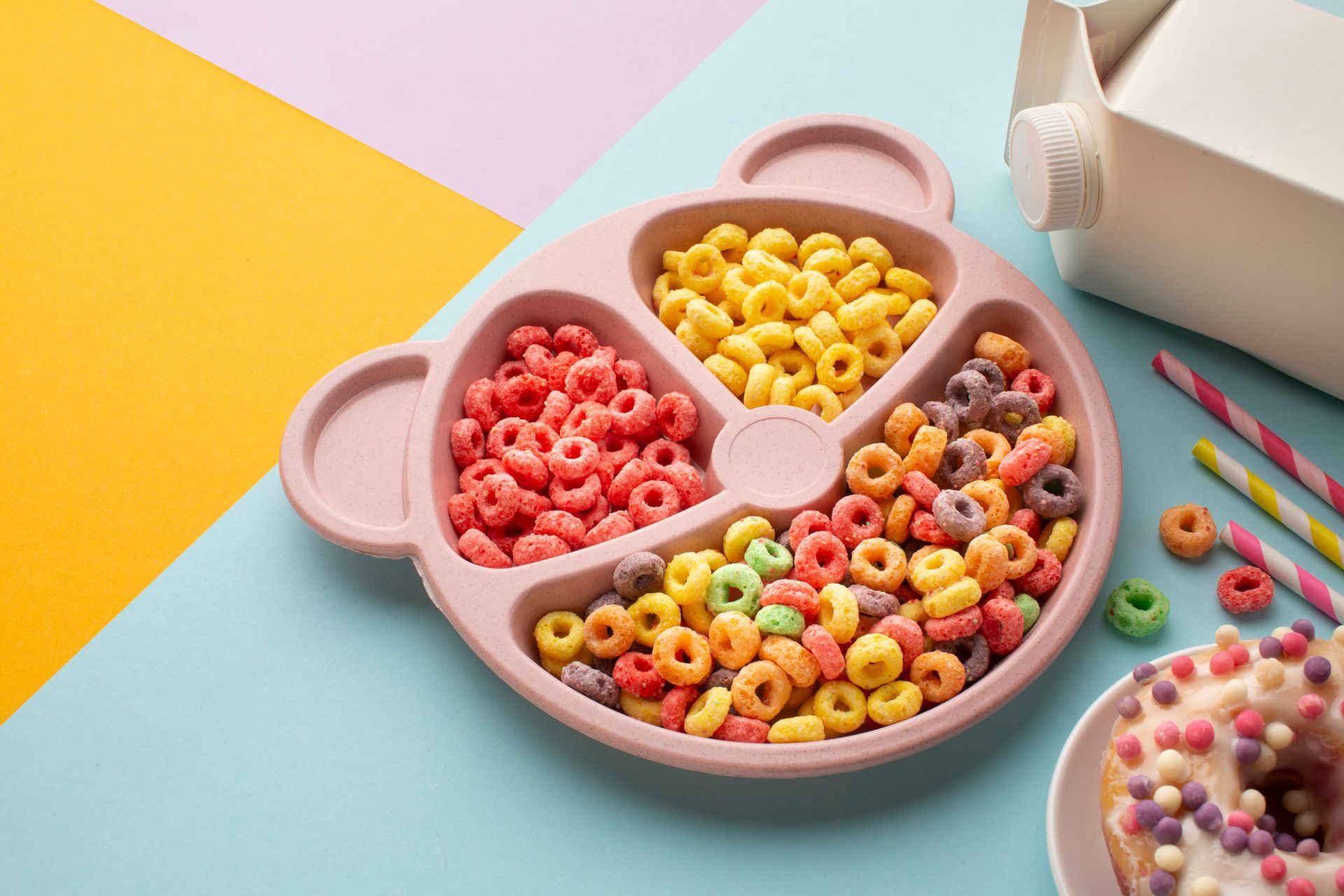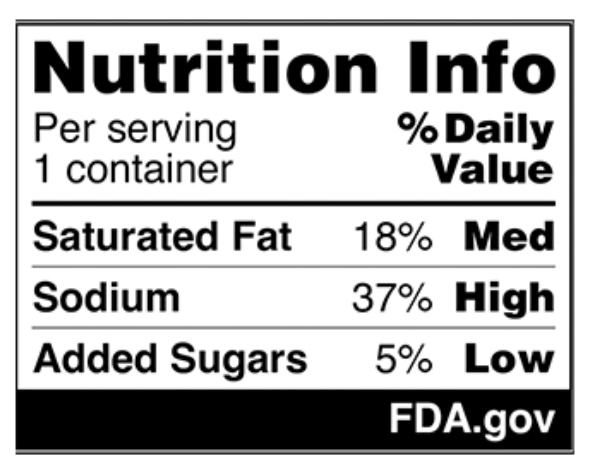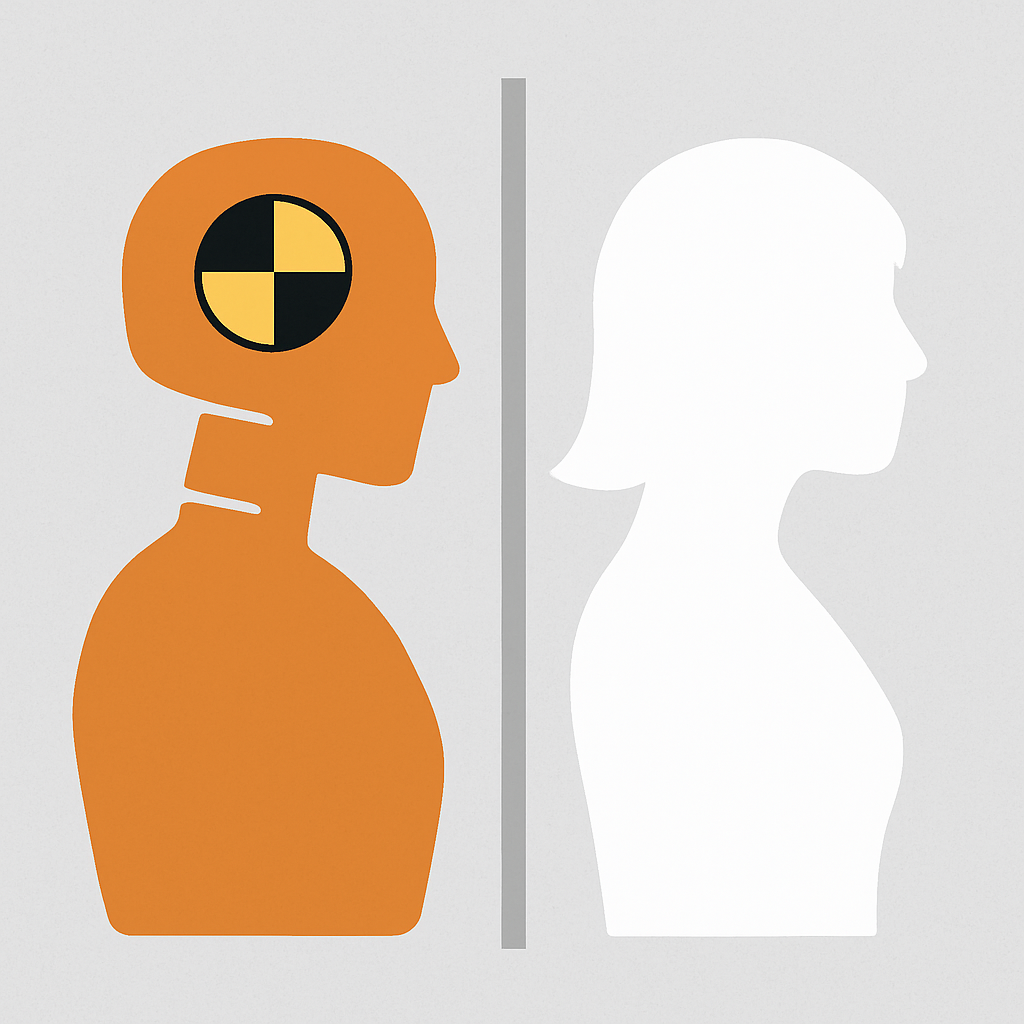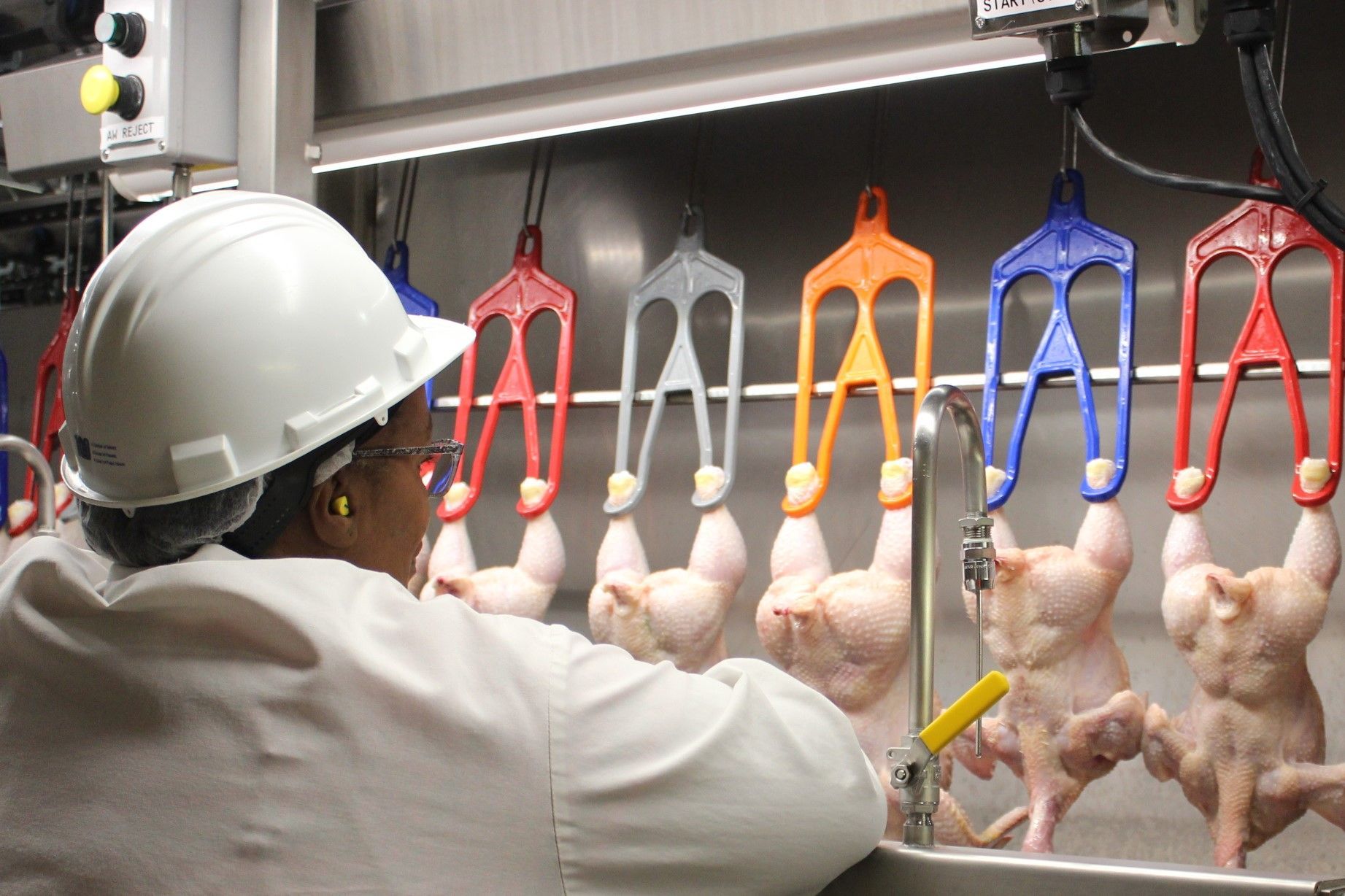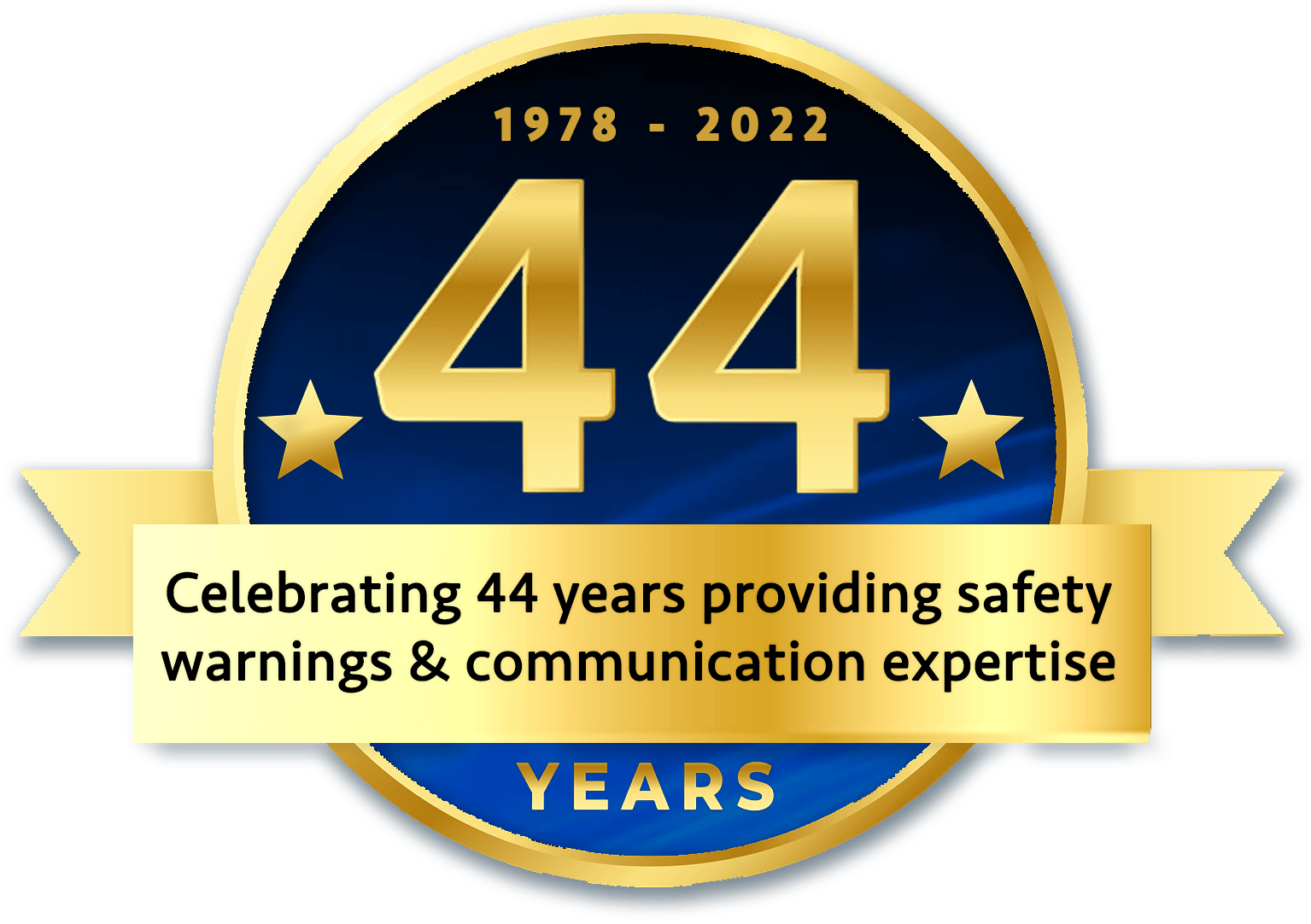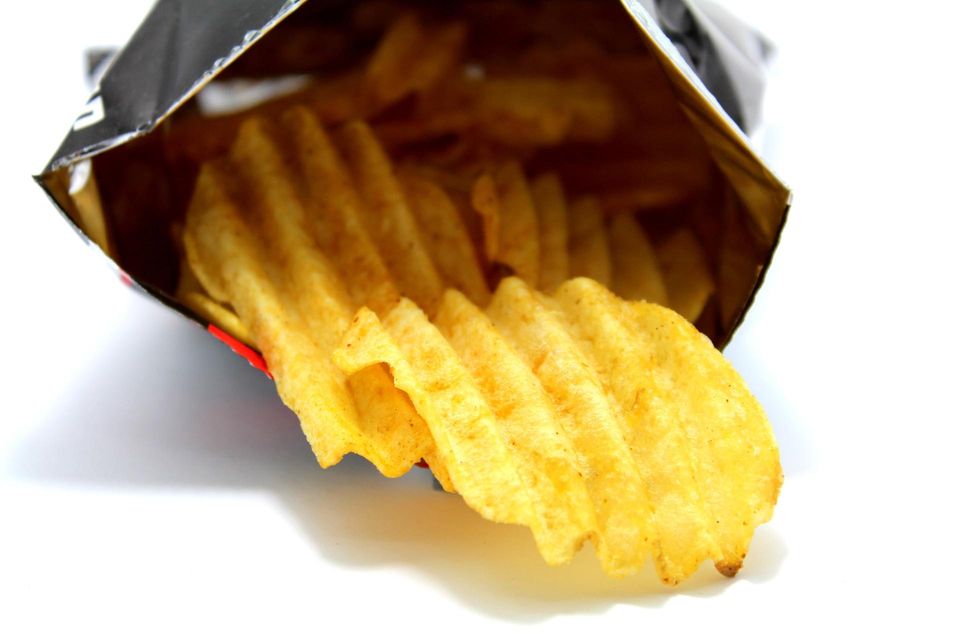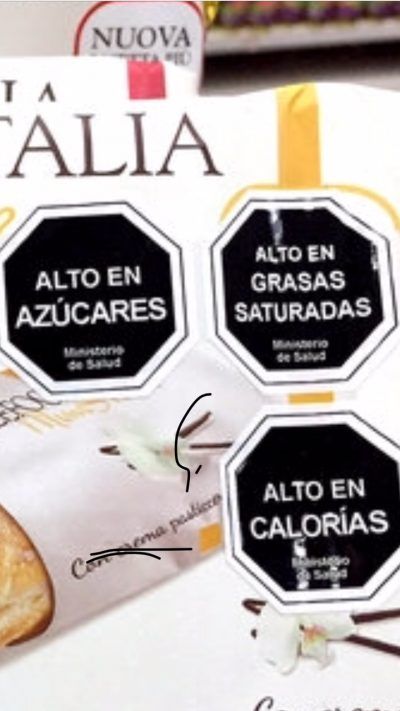TRUMP USES NAFTA NEGOTIATIONS TO UNDERMINE NEEDED FOOD WARNINGS
Donald Trump hasn’t hidden his disdain for the North American Free Trade Agreement (NAFTA), but now it is revealed in a recent New York Times story (March 21 2018, Pg.A-1,9) that the Trump Administration is trying to block an effort by other members of NAFTA (especially Mexico and Canada) from implementing highly conspicuous warnings to consumers about junk food containing high amounts of sugar, salt and fat. The new warnings being discussed by representatives from Mexico, Canada, Brazil, Peru, Uruguay, Argentina and Columbia are modeled after the apparently highly successful use by Chile, since 2016, of colors, shapes and easily understood symbols, including a black stop sign symbolizing dangerous amounts of sugar, salt or fat. (See Figure 1)
The Grocery Manufacturers Association (GMA) predictably is arguing for voluntary labeling programs and was quoted by the Times as stating it “supports a modernized NAFTA that will ensure standards are based on science, minimize unnecessary trade barriers, and benefit consumers in all three countries.” Although the U.S. Trade Representative’s spokesman, Emily Davis, told the Times, “the United States supports science-based labeling that is truthful and not misleading,” the degree of collusion between the Trump Administration and the GMA (which consists of executives from, among others, Coca-Cola and PepsiCo). For example, the Trump Administration, after the FDA implemented major changes to its food and nutritional label requirements (set to go into effect July, 2018), has delayed these vitally needed changes until January, 2020, claiming industry needed more time to produce the new labels. This is a patently ridiculous claim, which could lead to the death of thousands of diabetics from heart disease. What could possibly be untruthful or “misleading” about a food label that conspicuously and clearly tells the truth about the amount of sugar, salt and fat in a food product!
In several prior issues of this newsletter (e.g., March, 2013, July, 2014 and June, 2017), I have pointed out the dangers of sugary drinks and other products and the need for clear labeling, including warnings to help consumers understand what they are eating or drinking. This is very important because the FDA has determined that 77% of consumers actually pay attention to food labels while they are shopping. I have even recommended to the FDA that food products not only list the total amount of added sugar (which is now part of the delayed label implementation) but that they also list the amount of sugar in TEASPOONS INSTEAD OF GRAMS since only 5% of Americans understand the metric system. Why is the GMA insisting on using the metric system when they know this is like speaking Greek to a nation that mostly speaks English! Their answer is laughable. They told the FDA that they are actually doing a service to Americans by helping them to learn the metric system. The truth is that the GMA doesn’t want us to know how much sugar is in our food. If you knew the average 20 ounce bottle of a sweetened soft drink (whose label lists 60 grams of sugar) actually has 15 teaspoons of sugar , how many of those drinks would you consume?
When I first started writing about the need for better food labeling and warnings, the FDA reported that 70% of us were overweight and 33% of us were obese. Today, 70% of us are still overweight, but the rate of obesity has increased to 40% . (FYI, obesity is defined as having a body mass index of 30% or more.) Given the dramatic increase in obesity in America over the last decade, perhaps the GMA will finally recognize that our current food labeling system, despite the high number of Americans who look at the label, is not effective. Or, have they decided, along with the Trump Administration, that once again in America, industry must put PROFITS OVER SAFETY!



